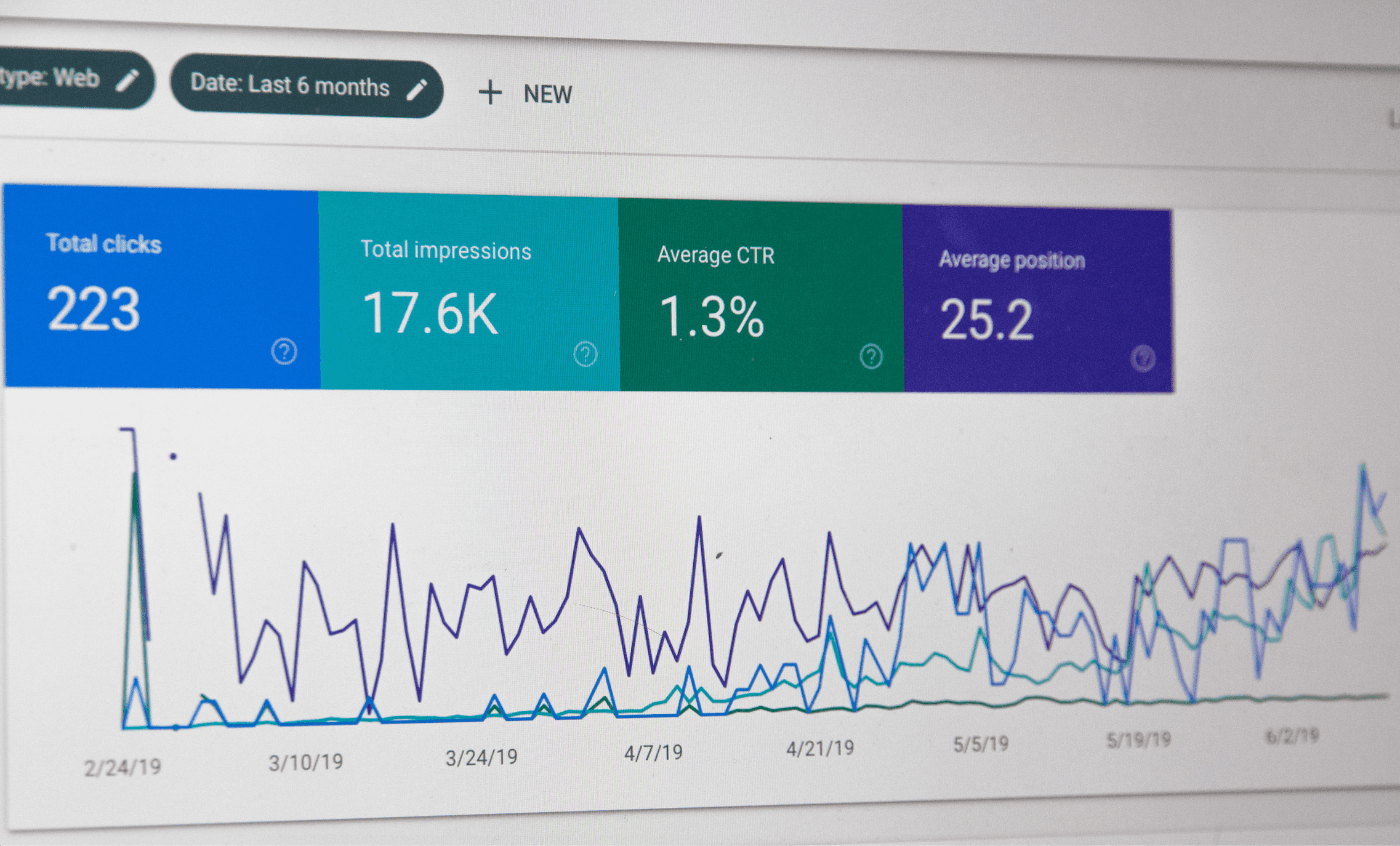
How to Start a Business Podcast in 2024

In 2024, podcasts are more than just entertainment; they’re a key way for businesses to connect with audiences. And with over 100 million Americans listening weekly, starting a podcast is a smart move for any brand looking to expand its reach.
Let’s start by exploring the benefits of starting a business podcast.
Benefits of Starting a Business Podcast

Launching a business podcast comes with a variety of benefits. Business podcasts can help:
- Increase brand awareness: By the end of 2024, podcasts are expected to attract 504.9 million listeners, offering a unique opportunity to extend your brand’s influence beyond traditional marketing avenues. In addition, regular episodes keep your brand at the forefront of listeners’ minds, enhancing brand recognition.
- Build authority: Sharing industry insights and expertise through a podcast establishes your brand as a thought leader. This differentiates you from competitors and attracts business opportunities.
- Engage targeted audiences: Podcasts allow for in-depth discussions on niche topics, attracting listeners who are genuinely interested in your content. This leads to higher engagement and potential customer conversion.
- Humanize your brand: Giving your brand a voice through podcasts creates a personal connection with your audience. This, in turn, fosters loyalty and trust by presenting your brand’s story and values in a relatable way.
- Generate leads: Each episode can be a lead generation tool, with calls to action and special offers that guide listeners towards conversion. Additionally, podcast content can be repurposed across other marketing platforms, enhancing overall content strategy.
If you’d like to enjoy these benefits, then it’s time to work on creating a winning podcast. Let’s outline the steps you’ll need to take to start your business podcast.
9 Steps to Start a Business Podcast

Starting a business podcast involves precise planning and strategy. Here’s a step-by-step guide to walk you through the process.
Step 1: Define your podcast goals
Defining clear goals for your podcast is essential to steer its direction and evaluate its impact effectively. Here’s how you can set strategic goals for your podcast:
- Understanding what a goal is: A goal for your podcast should be a specific, measurable achievement that supports your broader business objectives. It outlines what you want to accomplish through your podcast, guiding the content and outreach efforts.
- Applying goal setting principles: Use the SMART criteria—Specific, Measurable, Achievable, Relevant, Time-bound—to frame your podcast goals. This ensures your objectives are clear and attainable within a certain timeframe.
- Considering business impact: The nature of your business should influence the goals you set. For example, if your business needs to enhance its thought leadership, your podcast goals might focus on attracting industry experts as guests.
Conversely, the goals you set, like increasing brand awareness or generating leads, can significantly impact how you position your business in the market.
Here are some examples of common goals and tips to help you achieve them:
- Increase downloads: Aim for a specific number of downloads to gauge audience size and interest.
- Boost listener engagement: Enhance interaction by encouraging listeners to participate in discussions. This can deepen audience relationships and provide valuable feedback.
- Expand contact list: Use your podcast as a tool for lead generation by offering valuable resources in exchange for contact information.
- Widen reach: Promote your podcast across various channels and feature guest speakers to tap into new audiences.
- Strengthen brand identity: Integrate your brand’s message consistently across episodes to enhance brand recall and loyalty.
- Improve retention: Keep your audience engaged with high-quality content that encourages them to return for more.
Each well-defined goal should align with what your business stands to benefit from the most, ensuring that every episode moves you closer to your overall business objectives.
Step 2: Identify your target audience
A target audience is the specific group of people who are most likely to be interested in your podcast. Identifying and understanding this group allows you to tailor your content, presentation, and marketing strategies more effectively.
By focusing on your target audience, you can increase the relevance of your content and boost listener loyalty and engagement. It also allows you to streamline your marketing efforts, concentrating resources on those most likely to become regular listeners.
Here is how you can identify your target audience:
- Research: Investigate who is currently engaging with similar content. You can use analytics from social media and listener surveys to gather demographic and psychographic data.
- Segmentation: Break down your audience into segments based on demographics, interests, and behaviors. This step helps you address specific needs and preferences.
- Persona development: Create personas representing key audience segments. These personas should include detailed characteristics like age, interests, beliefs, and common challenges. They will help you visualize your audience and tailor your content more effectively.
By synthesizing this information, you can craft a podcast that not only attracts but deeply engages your target audience. This will ensure your content is both relevant and effective.
Step 3: Choose a podcast format
Selecting the right format for your podcast is crucial to effectively engaging your audience and aligning with your content strategy.
The format you choose for your podcast will shape how your audience experiences your content. When selecting the format, consider the nature of your topics, your business brand, and your audience’s listening habits.
Here is a detailed table comparing different podcast formats to help you decide which suits your goals best:
| Format | Description | Best For |
| Solo | Hosted by you alone, focusing on specific topics or experiences. | Ideal for experts or personalities looking to establish a direct connection with the audience. |
| Interview | One-on-one discussions with guests from relevant fields. | Excellent for accessing a wider range of expertise and sharing diverse insights. |
| Co-hosted | Two or more hosts engage in discussions or debates. | Suitable for creating dynamic and engaging dialogues, making content production more collaborative. |
| Narrative | Scripted storytelling with a structured plot. | Perfect for delivering complex information or stories in an engaging and accessible manner. |
Step 4: Plan your content strategy
A content strategy is a plan that defines how you will create, manage, and deliver your podcast’s content to achieve specific goals. It acts as a roadmap for crafting engaging and consistent content that aligns with your podcast’s objectives.
This strategy will help you with organizing topics, scheduling, and production to ensure each episode effectively contributes to your overall mission.
Here’s how you can create a content strategy for your podcast:
- Define objectives: Start by clarifying what you want to achieve with your podcast. This may be educating your audience, building brand awareness, or driving engagement.
- Audience research: Understand your listeners’ preferences, pain points, and interests. This will guide you in selecting topics that resonate with them.
- Outline topics: List potential topics that align with your podcast’s goals and audience interests. Prioritize these based on their relevance and the value they offer to your audience.
- Develop a content calendar: Create a calendar that schedules when each episode will be recorded, edited, and released. This calendar should account for seasonal topics, significant events relevant to your content, or guest availability if you plan interviews.
- Decide episode format: Determine the structure of your episodes. Will they include interviews, narratives, panel discussions, or a mix of formats? Planning your episode format in advance helps streamline your production process and ensures variety in your content offering.
- Prepare scripts and talking points: For structured or narrative content, prepare detailed scripts. For interviews or discussions, outline key talking points to guide the conversation and ensure comprehensive coverage of each topic.
- Guest planning: If your episodes include interviews, identify and schedule guests ahead of time. Prepare specific questions that align with the episode’s goals and engage both your guest and your audience.
- Review and adjust: Continuously monitor the performance of your content against your objectives. Use listener feedback and analytics to refine your strategy and make necessary adjustments.
A well-defined content strategy streamlines production, improves resource management, and aligns episodes with your strategic goals, enhancing podcast quality and the potential for success.
Step 5: Gather Equipment and Software
Nobody wants to listen to a podcast with low sound quality. In fact, 25% of podcast listeners are less likely to trust audio ads from brands that are low in volume. The best way to ensure great sound quality is by investing in professional-quality equipment and software.
Here’s a breakdown of what you might consider for both a basic and an advanced setup:
Basic Setup (More Affordable Option)
This setup is designed for beginners or those with a limited budget who still want to produce quality audio.
- Microphone: A USB microphone, such as the Audio-Technica ATR2100x-USB, is affordable, easy to use, and provides decent sound quality.
- Headphones: Use basic over-ear headphones that plug directly into your computer or microphone. No need for anything high-end; just ensure they offer clear sound.
- Recording Software: Audacity or GarageBand. Both are free and provide sufficient editing capabilities for most podcast formats.
- Pop Filter: An inexpensive pop filter to attach to your microphone and help reduce plosives (hard ‘p’ and ‘b’ sounds).
- Stand: A simple desktop stand to hold your microphone stable while recording.
Advanced Setup (Better Quality Option)
This setup offers superior sound quality and more flexibility for those looking to invest more for higher production value.
- Microphone: An XLR microphone, like the Shure SM7B, is known for its wide frequency response and ability to capture sound accurately.
- Headphones: Professional-grade closed-back headphones like the Audio-Technica ATH-M50x are better for sound isolation and detail.
- Recording software: Adobe Audition or Hindenburg Journalist. Both offer advanced editing features and are favored by professional podcasters.
- Audio interface: Use a device like the Focusrite Scarlett 2i2 to connect your XLR microphone to your computer, offering better control over audio quality.
- Pop filter and shock mount: To minimize noise from vibrations and air blasts, get a high-quality pop filter and a shock mount.
- Mic stand: A robust boom arm stand to position your microphone perfectly without cluttering your desk.
Choosing between these setups depends on your budget, technical skills, and how serious you are about podcasting. The basic setup is great for getting started with minimal investment, while the advanced setup suits those committed to producing the highest quality podcast possible.
Remember that even the best equipment is useless if you do not know how to use it correctly. So ensure that you or a team member invest in equipment training so you can make the most of your equipment.
Step 6: Create Branding and Design Assets
As you establish your business podcast, it’s crucial to develop strong branding and design assets. These elements help solidify your podcast’s identity and ensure it resonates with your target audience.
Consider the following steps to create effective branding:
- Logo and cover art: Craft a logo and cover art that is visually appealing and reflects your brand’s core values. This imagery will be one of the first touchpoints for potential listeners.
- Theme music: Choose or compose theme music that aligns with your podcast’s tone and brand. This music will become a recognizable part of your podcast’s identity.
- Website integration: Incorporate a dedicated podcast section on your business website. This area should host episode archives, show notes, and downloadable resources, making your content accessible while enhancing SEO.
- Social media templates: Choose design templates for your social media channels consistent with your podcast’s branding. These will help maintain a unified look across platforms, making your marketing efforts more cohesive and recognizable.
By carefully crafting these elements, you ensure your podcast presents a professional image that aligns with your business branding. This not only attracts new listeners but also helps in retaining a dedicated listener base.
Step 7: Record and edit your episodes
Recording Prep
Before the red light goes on, the groundwork you lay is crucial to a smooth recording session. Start by ensuring all your equipment is in working order. Test your microphone, headphones, and any other hardware you plan to use. It’s not just about functionality; it’s also about familiarity. Knowing your tools well can significantly ease the recording process.
Next, consider your recording environment. Ideally, you want a quiet, enclosed space where you can control external noise. Soundproofing might involve some investment in materials like acoustic panels, but even simple solutions like heavy curtains or sealing gaps around doors can make a noticeable difference.
Recording Day
On the day of recording, set your microphone about six inches from where you’ll be speaking, and use a pop filter to soften any harsh plosive sounds—those pesky “p” and “b” sounds that can cause spikes in your audio. Wear headphones to monitor your audio levels in real time and adjust the input level to ensure your voice is clear but not peaking to avoid distortion.
We also advise you to record in segments. Recording in segments is a technique often overlooked by beginners but cherished by veterans. Not only does this make editing easier, but it also allows you to focus on delivering your best in short bursts. This approach can be especially helpful if you need to re-record any parts that didn’t go as planned.
Always have a backup recording running on a separate device if possible. It’s a simple precaution that can save you from unexpected technical issues.
Post Production/Editing
Once your audio is recorded, the next phase is editing, which transforms your raw material into a polished episode. This involves cutting unnecessary parts, adjusting levels, and maybe adding some music or sound effects for that professional touch.
For those starting, free editing software like Audacity offers robust features, including multi-track editing and various audio effects. It’s user-friendly for newcomers while still powerful enough for more complex projects. GarageBand is another excellent choice for macOS and iOS users, with an intuitive interface and a vast library of loops and effects that can enhance your podcast’s production value. For straightforward editing tasks, Ocenaudio provides a clean, simple interface that’s easy to navigate.
Editing is not just about fixing mistakes—it’s about pacing your episode, maintaining energy, and ensuring clarity. A well-edited podcast is engaging, comfortable to listen to, and leaves your audience wanting more.
By following these steps in preparation, recording, and editing, you ensure each episode is not only technically sound but also compelling and professional. These are qualities that can make your podcast stand out in a crowd.
Step 8: Publish your podcast
Successfully publishing your podcast involves a series of strategic actions to ensure it reaches and engages your desired audience effectively.
Here are the steps to follow:
- Choose a reliable hosting service: Select a podcast hosting service that suits your needs, with features like analytics, easy upload processes, and reliable distribution. Consider platforms such as Libsyn, Podbean, or Buzzsprout.
- Ensure distribution to major podcast directories: Set up distribution through your hosting service to ensure your podcast is available on major platforms like Apple Podcasts and Spotify.
- Attach proper metadata to each episode: Include engaging titles, comprehensive descriptions, relevant keywords, and appropriate tags to help potential listeners find your podcast easily.
- Conduct a final quality check: Before publishing, review each episode to ensure the audio is clear, editing is seamless, and all files are correctly formatted.
- Prepare show notes and transcripts: Create detailed show notes and, if possible, transcripts for each episode, including summaries, key points, and links to the resources mentioned. This will aid listener comprehension and enhance SEO.
- Maintain a consistent publishing schedule: Decide on a regular episode release schedule to keep your audience engaged and build listener loyalty.
- Launch with multiple episodes: Consider releasing multiple episodes at launch to provide new listeners with more content and encourage immediate engagement.
These steps will help ensure your podcast is professionally published and easily accessible. This setup makes your content appealing to your target audience and sets you up for success in growing your listener base.
Step 9: Grow your business podcast audience
Once your business podcast is live, focusing on audience growth and retention becomes paramount. A larger, engaged listener base can lead to more opportunities such as sponsorships, partnerships, and a stronger position as a thought leader in your industry.
There are two ways you can grow your podcast: organic growth or paid ads. Deciding on organic growth strategies versus paid advertising depends on your goals and resources. Organic methods, such as SEO and social media engagement, build a loyal audience over time and enhance credibility, but results can be slow. Paid ads provide immediate reach and are effective for quick boosts, especially when targeting specific demographics or promoting new launches.
Here are a few ways you can effectively expand and engage your listener base:
- Promote on Linkedin and industry-specific platforms: Share your podcast episodes on LinkedIn and other professional networks relevant to your industry. Tailor content to highlight business insights, leadership thoughts, and industry trends that resonate with your professional audience.
- Incorporate into B2B marketing strategies: Include your podcast in your B2B marketing efforts. Feature episodes in newsletters, on your company website, and during webinars where relevant. This helps position your podcast as a resource for industry knowledge and insights.
- Optimize for business-related search queries: Apply SEO strategies for your podcast using business-related keywords and industry-specific topics in your episode descriptions and show notes. This approach boosts your visibility to professionals searching for relevant content, driving organic growth.
- Collaborate with industry influencers and thought leaders: Invite experts, thought leaders, or influencers in your field as guests. This not only enhances content credibility but also leverages their networks to attract their followers to your podcast.
- Use targeted paid advertising: Consider using paid advertising on platforms frequented by business professionals, such as LinkedIn, to reach a more targeted audience. Tailored ads can help introduce your podcast to those most likely to find your content valuable.
- Analyze business metrics: Use analytics tools to track how your podcast is performing within your industry. Look at metrics like listen duration, download numbers, and conversion rates from calls to action within your podcast. This data will help you refine your approach and content to better meet your business audience’s needs.
Employing these targeted strategies can significantly boost the reach and impact of your business podcast. This approach transforms it into a valuable tool for thought leadership and professional growth within your industry.
Pitfalls to Avoid When Starting a Business Podcast
Launching a business podcast may not be smooth sailing for you. Here are some key pitfalls and how you can avoid them:
- Naming confusion: Avoid naming your podcast too closely to your business name unless it directly aligns with the podcast’s content. Aim for a name that captures the essence and scope of the podcast while being easy to remember.
- Ignoring listener needs: Your podcast should address the interests and challenges of your audience, not just serve as a platform for promoting your business. Ensure content is both informative and engaging to keep listeners coming back.
- Poor audio quality: Invest in good-quality recording equipment and editing software. Poor sound can deter listeners, regardless of the content’s quality.
- Inconsistent posting: Regular episodes foster listener loyalty. Inconsistency in your posting schedule can cause you to lose audience interest.
- Ineffective promotion: Simply publishing episodes is not enough. You must actively promote your podcast through various channels, including social media, your company’s website, and email newsletters.
Avoiding these pitfalls will help maintain the quality and professionalism of your podcast, ensuring it effectively reaches and resonates with your target audience.
Conclusion

Podcasts are highly suited for conversion. In fact, statistics reveal that a whopping 65% of podcast listeners are likely to purchase a product after hearing about it on a podcast. That’s more than half! Numbers that are unheard of in other popular channels like social media. Don’t wait anymore, start your podcast today and take advantage of the numbers!
Need help? SeedX, a comprehensive digital marketing and strategy firm, can guide you through every phase of your podcasting journey. As a digital marketing agency in NYC, we assist in setting up the technical infrastructure and crafting strategic marketing plans. Our expertise ensures your podcast launches successfully and thrives in the competitive market. Reach out to us today!








